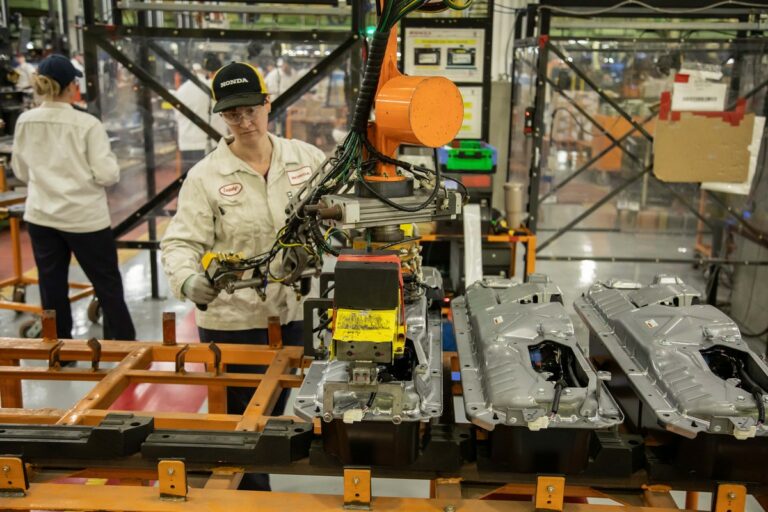Ohio’s Honda Plants Gear Up for the Future of Mobility
My family has a long history with Honda. Years ago, my parents bought a 1990 Honda Accord, and I remember my dad being proud that it was built in America. Today, Honda is investing heavily in its Ohio facilities, signaling a major shift toward electric vehicle (EV) production.
The Marysville, Ohio plant, along with its counterparts in Anna and East Liberty, is undergoing a significant $1 billion transformation. This retooling allows Honda to build internal combustion engine (ICE), hybrid-electric, and battery-electric vehicles on the same production lines. This offers the automaker flexibility and the ability to adjust production based on market demand.
Honda’s strategy, dubbed “thin, light, and wise,” is taking shape in Ohio. The first vehicle to roll off the new line will be Acura’s new battery-electric RSX SUV, slated for later this year. Production models of the 0 Saloon and Honda 0 SUV prototypes, unveiled at CES in January, will follow.

One notable advancement is the integration of a new lightweight, high-strength welding process, which will benefit every car made at the facility.

Honda, which launched its iconic Gold Wing touring motorcycle 50 years ago, plans for 100 percent of its vehicle sales to be the zero-emissions type by 2040 but is managing the transition. Honda is also hedging its bets with ICE and hybrids to meet demand and increase efficiency.
To meet its goals, Honda is combining technologies in a special welding technique they call CDC, or “constant DC chopping.” By using CDC, the automaker maintains a specific waveform with a high peak current while keeping the heat constant by automatically controlling the pause time. This approach combines the benefits of conventional DC and AC welding methods for improved results.
Leading this transformation is Tim Leopold, a Honda veteran of forty years, who is leading the changes at the Marysville Auto Plant. He notes that CDC welding is new not just to this plant, but to Honda globally. The company hasn’t used this method anywhere else in high-volume manufacturing.
Leopold explains that the CDC method helps control the nugget temperature differently than with DC welding. It is especially helpful when fusing metals of varying thicknesses. “Old-fashioned style welding” can negatively affect thinner metals, as heat is often applied unevenly. CDC welding will allow the manufacturer to create vehicles that are both stronger and lighter.

Another significant development involves the addition of six 6,000-ton megacasting machines at the Anna engine plant. These machines cast, machine, and join battery cases before sending them to the Marysville auto assembly plant.
A new battery plant, a partnership with LG Energy Solution, recently opened to complete the circle. The investment totals $4.4 billion. These massive, high-pressure machines produce the largest parts ever produced by Honda, according to the North American Die Casting Association, and are expected to be incorporated into future Honda EVs.
Honda Development & Manufacturing of America executive chief engineer Mike Fischer says the company considered building a new plant to house these giant units, but it conserved capital and opens the door for the multi-powertrain approach. Along with CDC welding technology, line consolidation, and space optimization, Honda is calling this a “second founding” for its Ohio production plants.



